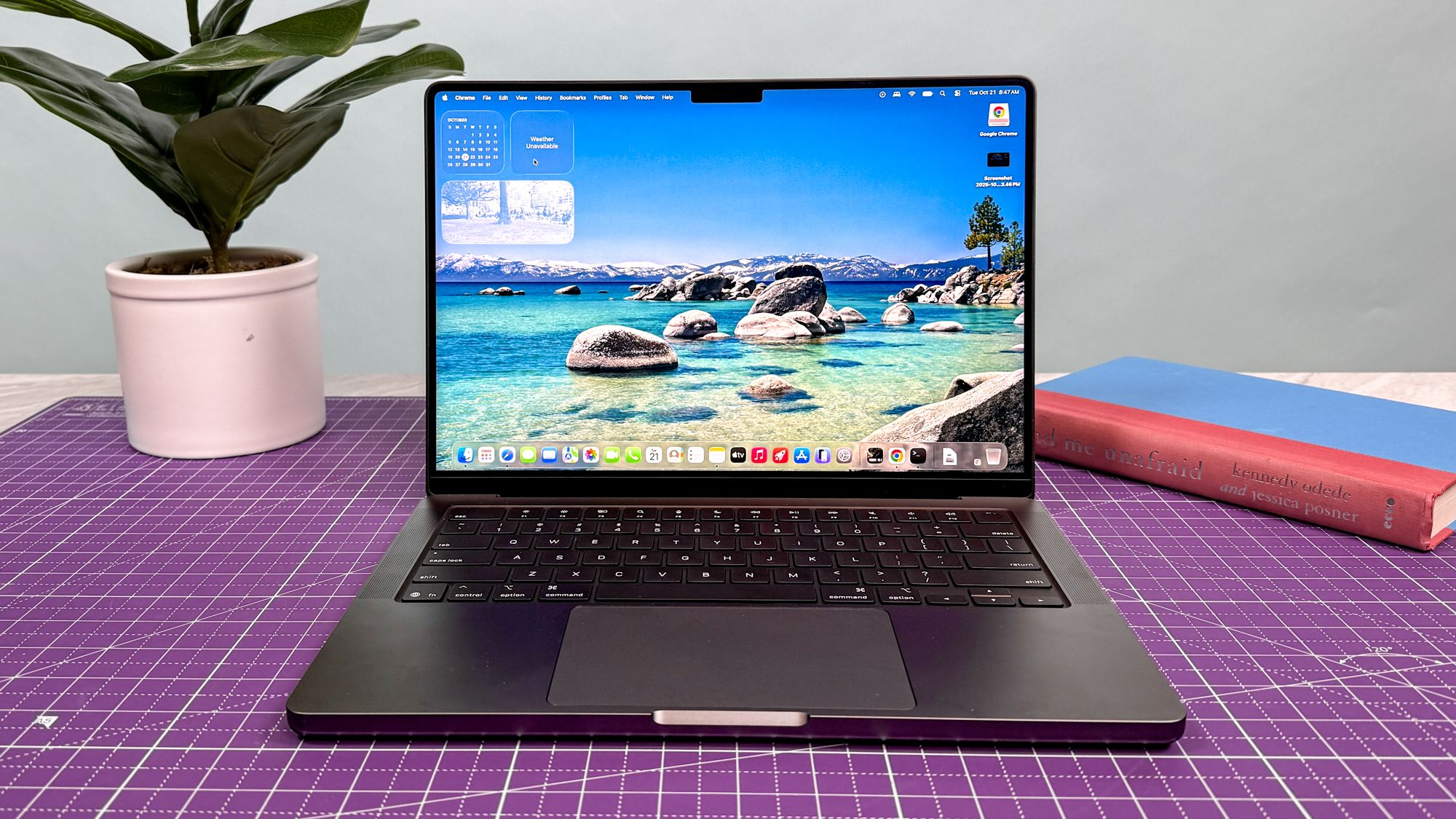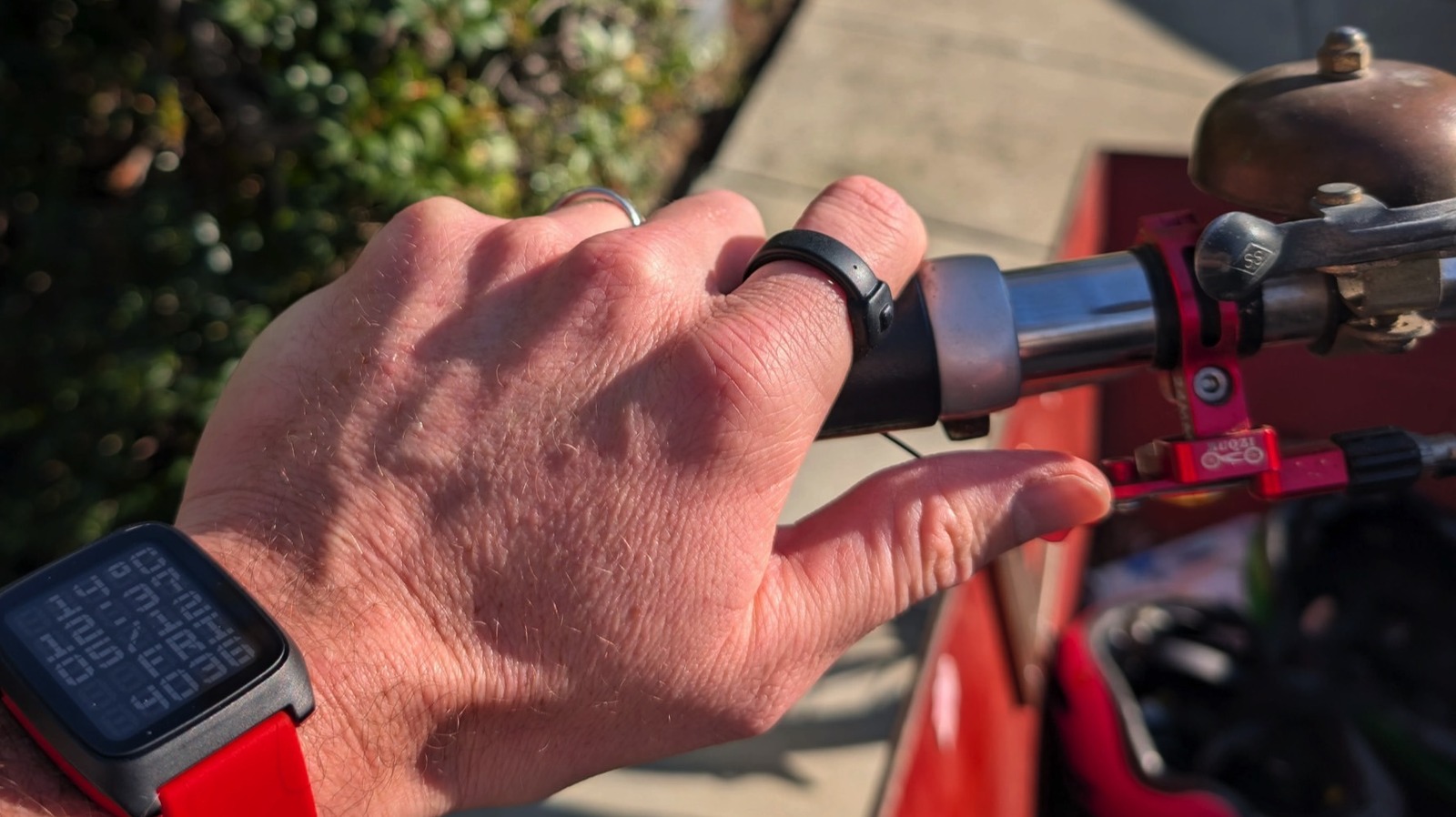Apple’s all-new MacBook Pro M5 has arrived, with the 14-inch laptop equipped with the latest silicon to boost performance. We’ve put it to the test, and now we can finally compare the latest MacBook Pro to its competition.
As you might have guessed, the results seriously impress.
With advanced GPU cores for better gaming performance, faster SSD speeds and still some of the longest battery life we’ve seen in a laptop, the new MacBook Pro with M5 continues Apple’s legacy of pumping out powerful machines — and it’s all at the same price as its predecessor.
Display tests
Kicking off with the display tests, you won’t find much different in the MacBook Pro M5 next to its previous models. Apple’s latest laptop is more of just a spec bump rather than a redesign (we may have to wait for the M6 MacBook Pro with an OLED touchscreen for that).
That means you can expect the same 14.2-inch Liquid Retina XDR (3024 x 1964 pixels) display with a 120Hz refresh rate. As you’ll find, results are virtually the same, albeit with slightly more brightness and even better color gamut coverage.
|
Laptop |
Average brightness (nits) |
sRGB color gamut |
Delta-E color accuracy (smaller number is better) |
|---|---|---|---|
|
M5 MacBook Pro 14-inch |
558 |
115.4% |
0.20 |
|
M4 MacBook Pro 14-inch |
556 |
113.3% |
0.19 |
|
M4 Pro MacBook Pro 16-inch |
564.8 |
115% |
0.27 |
|
M3 MacBook Pro 14-inch |
555.8 |
114.50% |
0.11 |
|
M3 Pro MacBook Pro 14-inch |
559.8 |
111.60% |
0.29 |
|
M3 Max MacBook Pro 16-inch |
563.4 |
116.70% |
0.11 |
|
M4 MacBook Air 13-inch |
457.8 |
116.5% |
0.21 |
|
M4 MacBook Air 15-inch |
475.6 |
117.9% |
0.22 |
|
M3 MacBook Air 13-inch |
476.4 |
109.8% |
0.21 |
|
M3 MacBook Air 15-inch |
482.4 |
109.4% |
0.3 |
|
Dell 14 Premium |
354.6 |
163.2% |
0.28 |
|
Dell XPS 13 (2024) |
455.8 |
84.4% |
0.21 |
|
Lenovo Yoga Slim 7x |
464 |
219% |
0.37 |
|
MSI Prestige 13 AI+ Evo |
357 |
202% |
0.31 |
As with all our display tests, we measure brightness, color accuracy and how well these colors are presented on displays using a Klein K10-A colorimeter. We also test the screen’s brightness in five different zones and average them out to come up with the average brightness.
For context, brightness is measured in nits (the higher, the brighter), sRGB color gamut percentage tells you how much of the common sRGB color gamut is shown on screens and the Delta-E score tells us how accurate the colors are (the closer to 0, the better).
Regardless of having an identical display to its older sibling, the M5 MacBook Pro delivers some of the highest brightness you’ll find on a laptop, with it only being trumped by the M3 14-inch MacBook Pro. It also manages to offer slightly more accurate, vivid colors when it comes to sRGB gamut coverage, and you can expect an all-around better display over the M4 MacBook Air models.
Brightness and color accuracy may be its highlights, which are great for creatives who require the important factors, but without OLED, it falls behind some of its competition. That includes the Dell 14 Premium with its 14.5-inch (3200 x 2000) OLED panel, and it can’t compete with the over-200% sRGB coverage on the Lenovo Yoga Slim 7x and MSI Prestige 13 AI+ Evo.
Regardless, the MacBook Pro M5 still offers an excellent display, and we continue to be impressed by the clear, detailed image quality it showcases.
Performance tests
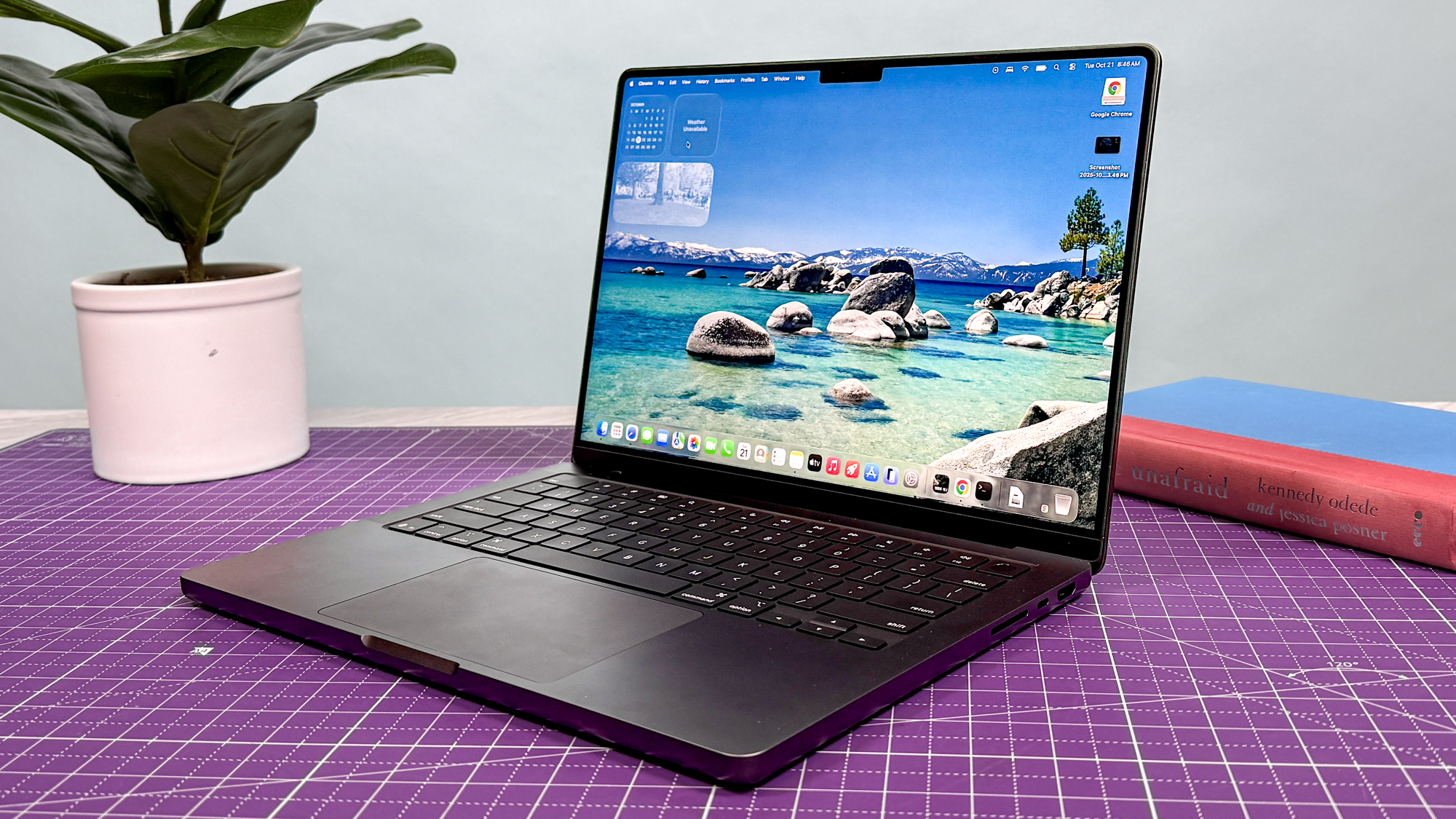
What we’ve all been waiting for. The M5 chip has ben poised by Apple to deliver “the next big leap in AI performance,” with next-gen GPU architecture for stronger graphics across the board. So, does it deliver? Put simply, yes.
We’ve gathered multiple results across its CPU, GPU and SSD benchmarks, and one thing is clear: it’s all significantly faster than the M4 MacBook Pro. That is already a mighty machine, so you can imagine the gap in results over Windows laptops, too.
|
Laptop |
Geekbench 6 single-core |
Geekbench 6 multi-core |
|---|---|---|
|
M5 MacBook Pro 14-inch |
4288 |
17926 |
|
M4 MacBook Pro 14-inch |
3807 |
15114 |
|
M4 Pro MacBook Pro 16-inch |
3910 |
22822 |
|
M3 MacBook Pro 14-inch |
3138 |
12018 |
|
M3 Pro MacBook Pro 14-inch |
3154 |
14357 |
|
M3 Max MacBook Pro 16-inch |
3200 |
21711 |
|
M4 MacBook Air 13-inch |
3751 |
14947 |
|
M4 MacBook Air 15-inch |
3799 |
14921 |
|
M3 MacBook Air 13-inch |
3082 |
12087 |
|
M3 MacBook Air 15-inch |
3102 |
12052 |
|
Dell 14 Premium (Intel Core Ultra 7 255H) |
2701 |
15794 |
|
Dell XPS 13 (Snapdragon X Elite X1E-80-100) |
2797 |
14635 |
|
Lenovo Yoga Slim 7x (Snapdragon X Elite X1E-80-100) |
2448 |
13750 |
|
MSI Prestige 13 AI+ Evo (Intel Core Ultra 7 258V) |
2714 |
10392 |
In Geekbench 6, which measures how fast a CPU is through handling tasks, the M5 MacBook Pro breezed past a majority of its competition. Most importantly, its single-core result is one of the fastest we’ve tested — even compared to the 16-inch MacBook Pro with M4 Pro!
But its multi-core score is equally outstanding, only beaten by the M4 Pro chip and M3 Max-equipped 16-inch MacBook Pro. Keep in mind, these more premium laptops are far more expensive compared to the M5 MacBook Pro’s $1,599 starting price, so seeing this performance inch closer on the base silicon is a welcome sight.
Windows laptops with Snapdragon X Elite and Intel Core Ultra 7 200 CPUs can’t reach the heights of what Apple is offering with its latest silicon these days, but this may change once Snapdragon X2 Elite Extreme and Intel Panther Lake arrive next year.
|
Laptop |
Blackmagic Disk Speed write (MBps) |
Blackmagic Disk Speed read (MBps) |
Handbrake time (mm:ss) |
|---|---|---|---|
|
M5 MacBook Pro 14-inch |
6517.7 |
6619.7 |
3:31 |
|
M4 MacBook Pro 14-inch |
3318.6 |
2899.5 |
4:31 |
|
M4 Pro MacBook Pro 16-inch |
6640.5 |
5353.7 |
2:38 |
|
M3 MacBook Pro 14-inch |
2769.1 |
2904.3 |
5:37 |
|
M3 Pro MacBook Pro 14-inch |
4211.5 |
5069.6 |
4:34 |
|
M3 Max MacBook Pro 16-inch |
7594.2 |
5561.1 |
2:34 |
|
M2 Pro MacBook Pro 14-inch |
2932.1 |
3455.8 |
5:03 |
|
M4 MacBook Air 13-inch |
1919.7 |
2891.1 |
5:34 |
|
M4 MacBook Air 15-inch |
3335.1 |
3012.5 |
4:57 |
|
M3 MacBook Air 13-inch |
3058.8 |
3030.7 |
6:32 |
|
M3 MacBook Air 15-inch |
3167.1 |
2968.2 |
6:34 |
SSD speeds have also seen a huge generation-on-generation improvement. Using the Blackmagic disk speed test, read and write speeds have more or less doubled over the M4 MacBook Pro, with the chip reaching the results of Apple’s M4 Pro laptop. And the same can be said about the M4 MacBook Air models.
As for our Handbrake video transcoding test results, which transcodes 4K video to 1080p, we saw speeds increase by a full minute over M4. Aside from the M4 Pro and M3 Max laptops, Apple’s latest Pro laptop features some of the fastest transcoding speeds around.
Just to note, Windows laptops aren’t here, as the Blackmagic test doesn’t work well with them. But overall, the M5 model offers some major gains over its predecessors, making it a reliable machine for transferring data and video editing.
| Row 0 – Cell 0 |
Total War: Warhammer 3 |
Sid Meier’s Civ VI |
Shadow of the Tomb Raider |
|
M5 MacBook Pro 14-inch |
67.5 |
67.3 |
57 |
|
M4 MacBook Pro 14-inch |
23 |
53.5 |
36 |
|
M4 Pro MacBook Pro 16-inch |
44.8 |
98.3 |
79 |
|
M3 Pro MacBook Pro 14-inch |
31.5 |
53.6 |
48 |
|
M3 Max MacBook Pro 16-inch |
68.7 |
56 |
119 |
|
M4 MacBook Air 13-inch |
16.9 |
38.3 |
26 |
|
M4 MacBook Air 15-inch |
19.6 |
44.7 |
31 |
|
M3 MacBook Air 13-inch |
15.8 |
41 |
25 |
|
M3 MacBook Air 15-inch |
N/A |
N/A |
N/A |
|
Dell 14 Premium |
43 |
103.4 |
50 |
|
Dell XPS 13 (2024) |
N/A |
21.2 |
N/A |
|
Lenovo Yoga Slim 7x |
N/A |
20.8 |
N/A |
|
MSI Prestige 13 AI+ Evo |
30.2 |
46.4 |
25 |
|
M3 MacBook Pro 14-inch |
19 |
51 |
32 |
Last but far from least, gaming. Apple talked big about its new 10-core GPU in the M5, delivering up to 1.6x faster graphics performance and frame rates over the M4 chip. Plus, it’s hardware-accelerated mesh shading, ray tracing and Dynamic Caching.
That appears to have all paid off. In our usual round-up of game tests, the M5 MacBook Pro could achieve around 60 frames per second (FPS) or higher, meaning Apple’s base chip can really deliver the gaming goods. In fact, it surpassed the Dell 14 Premium with an RTX 4050 GPU in Total War: Warhammer 3 and Shadow of the Tomb Raider, and considering that a discrete graphics card as opposed to the M5 chip’s integrated graphics, that’s a superb feat.
It’s also important to note that these games are running at 1200p resolution, with the MacBook Pro’s 16:10 aspect ratio displays. It shows these games could run slightly better if they were at, say, 1080p resolution.
My fellow computing expert, Tony Polanco, also tested more demanding titles with some real-world testing. For example, with the MacBook Pro M5 running Resident Evil 4 Remake, he saw frame rates up to 55 FPS at 1080p resolution with MetalFX upscaling turned off in the game’s settings. With MetalFX enabled, the fps hovered between 100 and 120 FPS.
It’s clear that graphics have improved, and while it still won’t quite reach the heights of the best gaming laptops, it’s certainly getting closer.
Battery life tests
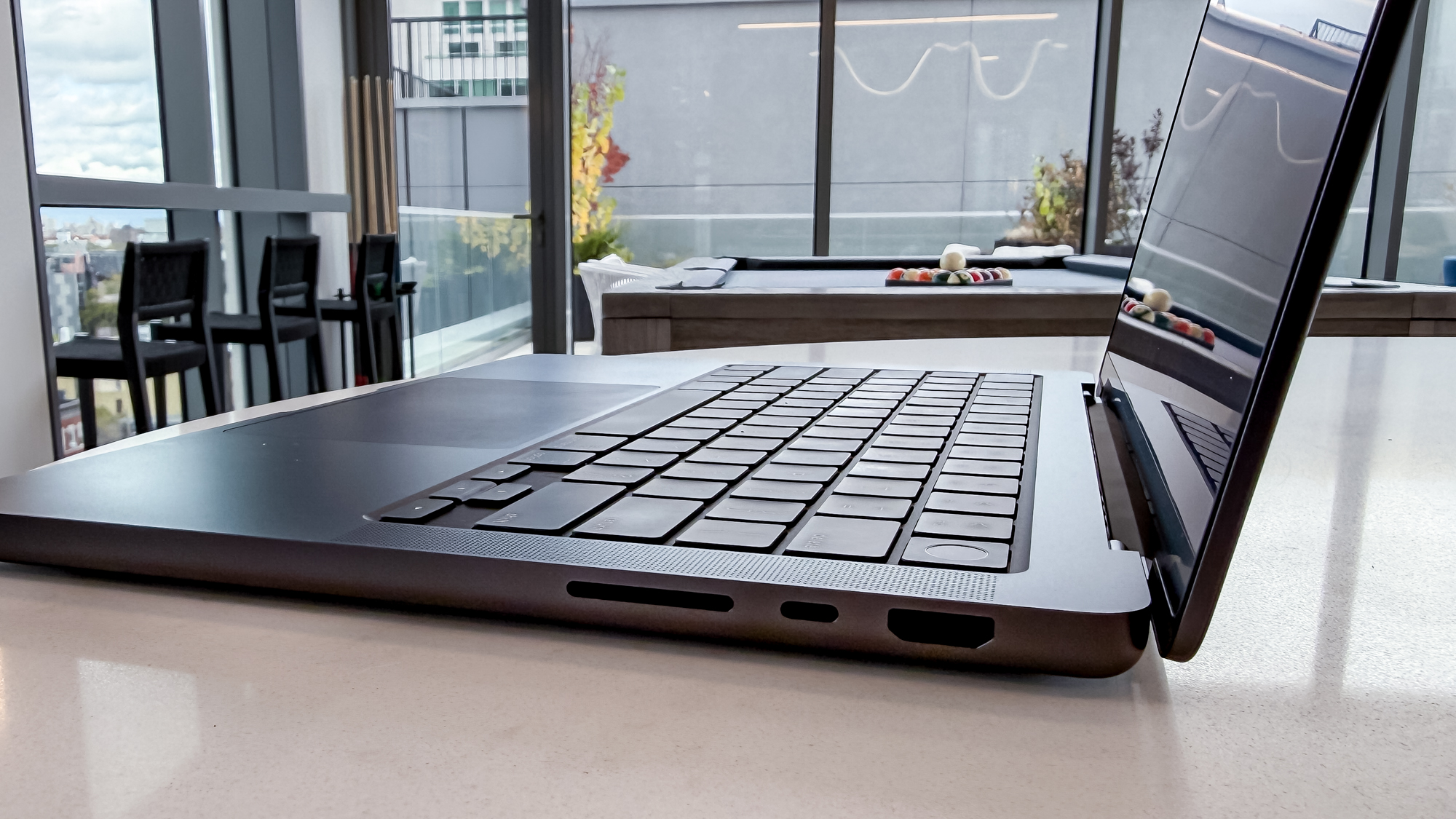
I would have hoped that the M5 chips power efficiency would deliver Apple’s promised 24 hours of battery life in the MacBook Pro M5, but in our tests, it’s a few hours behind that mark.
That’s not to say its battery life isn’t good; quite the opposite. The M5-equipped machine is easily among the best laptops for battery life, but it’s slightly under what its predecessor dishes out.
|
Laptop |
Battery life (web surfing hh:mm) |
|---|---|
|
M5 MacBook Pro 14-inch |
18:14 |
|
M4 MacBook Pro 14-inch |
18:31 |
|
M4 Pro MacBook Pro 16-inch |
20:46 |
|
M3 MacBook Pro 14-inch |
17:25 |
|
M3 Pro MacBook Pro 14-inch |
17:22 |
|
M3 Max MacBook Pro 16-inch |
17:11 |
|
M2 Pro MacBook Pro 14-inch |
16:38 |
|
M4 MacBook Air 13-inch |
14:52 |
|
M4 MacBook Air 15-inch |
15:14 |
|
M3 MacBook Air 13-inch |
15:13 |
|
M3 MacBook Air 15-inch |
15:03 |
|
M1 MacBook Air 13-inch |
14:41 |
|
Dell 14 Premium |
08:16 |
|
Dell XPS 13 (2024) |
19:41 |
|
Lenovo Yoga Slim 7x |
14:14 |
|
MSI Prestige 13 AI+ Evo |
14:27 |
In our battery test, involving continuous web surfing over Wi-Fi with the laptop’s display set to 150 nits of brightness, the MacBook Pro with M5 could reach 18 hours and 14 minutes.
That’s 17 minutes behind the M4-equipped Pro, but it still outshines the rest of the MacBooks and Windows laptops on the list (aside from the M4 Pro at nearly 21 hours, and Dell XPS 13 at nearly 20 hours). Whatever Dell tried with its recent 14 Premium at just over eight hours, it’s not working.
It’s hardly a surprise that it doesn’t reach a full 24-hour day of battery life, but we rarely see these claims pan out. Still, at over 18 hours, this laptop will more than last you a full work day, and have plenty of juice in the tank for play during the after-hours.
Outlook
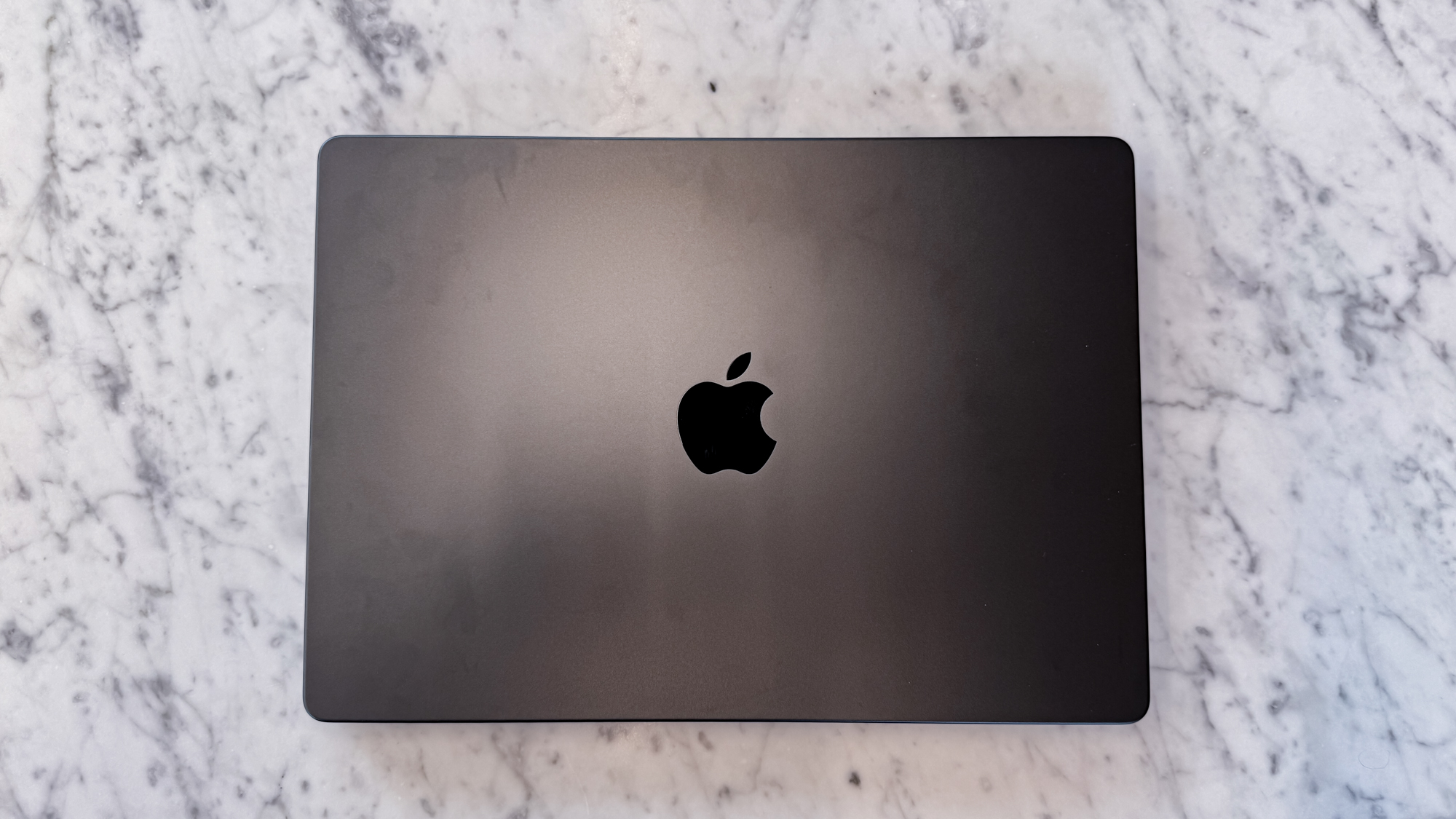
The MacBook Pro M5 may deliver the same display as its M4 predecessor, along with battery life that isn’t quite as long, but this spec bump has shown just how far Apple has come in just a year.
From the scores in our testing, the M5 chip has offered an incredible uplift in performance across the board, with an extremely strong single-core Geekbench score (and multi-core), SSD speeds that even match the pricier M4 Pro MacBook Pro, faster transcoding speeds for video editors and beefier graphics performance for even higher frame rates.
Apple has made the go-to laptop for power users even stronger, showing a clear gap between what its already impressive M4 predecessor could manage, especially in the MacBook Air models. Now, is it worth M4 MacBook Pro owners to upgrade? I don’t think so, unless you’re after the fastest performance in the base MacBook Pro right now. Still, it’s easily one of the best MacBooks around.
In any case, if you’re looking for a machine that can take on video editing, gaming or more demanding tasks, the latest MacBook Pro with M5 power will certainly do the trick (as always) — and the results prove it.
Follow Tom’s Guide on Google News and add us as a preferred source to get our up-to-date news, analysis, and reviews in your feeds. Make sure to click the Follow button!

